Aids from NAV

If children and young people have an illness or disability that means they need help to move, cycle, sit, play, save energy, calm down, communicate etc. - simply given the same opportunities as able-bodied children - they can get aids for this. There is a whole "universe" of aids out there and it can be difficult to know what is right for your child. In this overview, you will find general guidance on how to proceed, tips for the application process and some "must-haves" in aids for children and young people (below).
Assistive devices can solve practical challenges, prevent loss of function or maintain and preserve function. Assistive devices should help people cope in all the different arenas of life, such as work, housing, school, leisure and activities. They come in all possible variations and for many different needs. It is not exclusively wheelchairs and stands. There are aids for children and young people with major physical care needs, sensory challenges, psychological and neurological conditions, reduced stamina, sensory loss - yes, both visible and invisible impairments.
The aid centers (also called HMS) are responsible for the delivery of aids and must function as a resource and competence center for the entire county. They also give interpretation services for the deaf, deafblind and hard of hearing.
In the municipalities, it is usually occupational and physiotherapists who assist in assessment and testing, and who write the applications. You can also apply yourself, or take an approval course to get it user pass, and thus increased influence and self-determination in choosing and ordering aids. Aids to be used for stimulation, communication and support in cognitive challenges such as e.g. waiting, time perspective etc. are sometimes sought by PPT.
Who can receive aids?
People who have a permanent (over 2 years) and significant functional impairment due to a condition, injury or illness can receive support for aids that are necessary and appropriate via NAV HMS. With necessary it is believed that there is an actual dependency relationship between the aid and the person, that the aid is needed in order to function in everyday life. With appropriate means that the aid must be useful and functional - simply "have something for it". E.g. to reduce anxiety and restlessness.
Remember that basically all loans of aids are free. The only aids for which there is a deductible are activity aids after the age of 26.
What aids are available?
There is a large range of aids and what you can get depends entirely on the type of disability, as well as whether the aid is part of a framework agreement (the aids for which NAV HSE has negotiated a price). These can be aids for sight and hearing impairment, mobility, psychomotor and motor training, sensory stimulation, restlessness, acting out and psychological challenges, leisure activities, energy saving, taking turns and concepts of time, language and communication, etc. Physio or occupational therapists in the municipality often have good knowledge of which types of aids may be appropriate for your particular child. It may also be a good idea to ask other parents with children with similar diagnoses/assistance needs about which aids they recommend. There is a lot of good experience to be gained from parents who have already trodden the path.
All aids that NAV has available at negotiated prices are included The aids database. The aids with a red NAV mark on them are price negotiated.
It is important to know that Hjelpemiddelsentralen has a long list of agreements with various aid suppliers, and these may in turn be internally ranked at NAV. That is to say that all people should initially try out the first choice on this "list", let's call it that aid number 1. If this does not fit/work, you can proceed to aid number 2 or 3. The further down the list you go, the greater the requirements for documentation and foundation are needed to get the application approved. Many of the aids that are listed as first choice are supplied with standard equipment, but there is a lot of good additional equipment which means that many people can still have the aid adapted to their needs.
In some cases, the price of the aid you want is not negotiated. Then you must get a price offer and preferably a test together with the supplier and adviser at NAV HMS so that it will be possible to get the aid approved.
However, some aids and medical equipment can be provided via others, either at bandage specialist/health shop, Treatment aids or the pharmacy. It varies somewhat from region to region as to what you get from which supplier.
How to apply for aids?
Contact a physio or occupational therapist in your municipality.
If you do not have a physio or occupational therapist, you can talk to a coordinator, social worker or doctor and ask for help/referral there.
Tips:
- With a good ergo, you should initially not need to do anything with the application other than sign it, but make sure to clarify the need and describe situations in everyday life where the aid is needed if this is not necessarily obvious to NAV HSE, and to bring out that the aid is necessary and appropriate.
- For the design of the application, it may be good for the ergo or physio to have access to the latest HABU report or other doctor's statement you have available that says something about the child's challenges. This makes it easier to formulate a good application.
- Adaptations are alpha omega! The suppliers have invaluable knowledge about the aids they produce and the possibilities of individually adapting these, so that the aid is as appropriate as possible in use. Feel free to have a chat with the supplier about possible adaptations before you apply for aids.
- If the aid you are offered does not feel optimal, you can ask to look at and try similar aids from other suppliers.
- check out Wheelchair Gadgets - they have many stylish oak protectors for wheelchairs to choose from for children and young people!
- Apply for small aids - grants for affordable aids from NAV. You can get a lump sum of NOK. NOK 2020 to buy aids such as educational and tactile toys, tools that enable participation in play, sensory light sources and switch-controlled toys, tools for eating, electric toothbrushes and other toiletries that relieve and simplify care, ergonomic equipment for leisure and school, simple arrangements in the kitchen, and motor training and activity . You can apply every 4 years.
- It is possible to get aids that are not on the framework agreement, but it often requires that you have been tested for aids on the framework agreement at NAV, or at least have very good arguments for why the particular aid you are applying for is necessary and appropriate for you .
- You can include the need for aids in one individual plan. The plan replaces applications for aids, and the goal is a more targeted use of aids and simplified case management.
- Always complain about rejection! If you can't bear to write a long complaint, we still recommend complaining and just refer to the information in the application.
- Before you complain, you can ask for more detailed information about why they think your child does not need the aid, and the legal basis for this reasoning. Remember to write that the appeal deadline is postponed until the date you receive the information you have requested from NAV. It is easier to write a complaint when you have received a little more information.
- The aid center often uses refusals on the grounds that the aid is found in general trade, i.e. a normal shop. However, there is no legal authority that gives NAV a basis for refusing on the basis of this, nor is there any preparatory work for the National Insurance Act that provides a basis for it. If NAV uses these arguments in rejections you receive, you should ask them to explain which law and section this is in, as well as ask for an explanation as to why they believe this is a product in general trade. Again, remember to write that the appeal deadline is postponed pending this response.
ATTENTION! Social security claim about Bardum safety sleeper:
Many have experienced being refused a bed with "walls" and a closing function from NAV Hjelpemidelsentral with arguments such as that it will not remedy the functional impairment and/or that these beds involve the use of coercion/power because the child is confined. The starting point for parents applying for a bed with such a frame is, of course, security for both children and relatives, as well as protection when children need this. For some, such a bed is absolutely necessary to be able to sleep safely, to avoid dangerous situations and for the child to find peace of mind.
The Social Security Court has recently ruled (on Aug-22) on NAV's rejection of both such a bed and a travel bed with the same function (Bardum safety sleeper), and you will find the ruling from the Social Security Court here (coming during August/September 2022). If you are applying for such a bed, we recommend that you refer to these rulings in your application.
Testing and delivery:
Sometimes it is useful, or NAV requires, that you go to test the aid/several variants of the aid to find the right one. This usually takes place at NAV's aid centre, nursery school/school, at an institution or at one's own home.
Once the aid has been approved, it will be delivered to the home address, institution or nursery/school if agreed. It is also possible to collect yourself if you wish, e.g. if there is some time until delivery.
All delivery of aids from NAV HMS is free. HSE pays the municipality to deliver this to your home. The municipal aid warehouse can make its own rules.
When moving, there is nothing in the regulations that covers moving aids. Contact the municipality and ask them if they can help with this. If you are moving to another county, talk to NAV HMS before taking the aids with you. They must either be transferred to a new aid center on paper, or you must get an equivalent aid in a new county.
If the aid is damaged:
If the aid does not work as normal or is damaged, it must be repaired at the local "aid office" in the municipality or NAV aid center. The municipality can make simpler repairs. Therefore, first contact the municipality when you have an aid that does not work. The municipalities send the aid to the NAV aid center if necessary.
The telephone number of the local aid centre/service department, the municipality has an overview of, if applicable. ask your local physio or ergo for the phone number the next time you speak to them.
A repair can, in the worst case, take a few weeks. Anyone who has an electric wheelchair and is 100% dependent on it should therefore have an adapted manual wheelchair in addition as a backup solution.
Emergency call number evening and weekend:
The emergency repair scheme applies all days between 08-24, and includes all aids lent by NAV that can put you in an emergency situation in the event of a malfunction or breakdown. On the NAV website you will find an overview of all the country's emergency services:
They only go out for repairs that cannot wait until the next day, possibly Monday if it's a weekend, and they have limited equipment in the service van for repairs. The emergency service should only be called if it is strictly necessary, they do not go out at night unless it is absolutely precarious.
Breakdowns of electric wheelchairs may, for example, have to be picked up by Falck/NAF, but this must be agreed with the emergency service.
Short-term need for aids:
In case of short-term need for aids, e.g. if you have a temporary injury or illness, you can borrow aids from the municipality's short-term warehouse, or NAV HMS if the municipality does not have the necessary aids to lend. If, for example, you break a foot and need a wheelchair, or need a shower chair after an operation for a few weeks, it is therefore the municipal aid warehouse that lends this. First of all, contact the municipality for information and guidance.
Relevant legislation and guidelines:
Regulations on the responsibility of the aid center
NOU 2010:5 Active participation, equality and inclusion—A comprehensive range of aids
"Must-have" aids
Below you will find a small collection of various aids that we and members of the organization have good experience with. Feel free to contact us at post@lovemammaene.no if you think there is someone who should be on this list!
Seating furniture and beds:
Jockey small, active work chair
Bicycles, vehicles and leisure activities:
Momo Motion tricycle with auxiliary motor
Tricycle with fixed hub (fixed hub = that the pedals rotate with the wheels and you can cycle both forwards and backwards)
Tricycle with freehub (free hub = that nothing happens when you push backwards)
Monitoring, facilitation and sensory stimulation:
Ball duvet (unfortunately must now be purchased myself)
The time log (term of time/activity adjustment)
Switch box for controlling colours/bubble tubes/wall/fibre optics
Bath and care:
ASK, language and communication aids:
Little Step by step communicator
Screen reader for the visually impaired
Reading lists for the visually impaired
Wheelchairs, vehicles and transportation:
Jump Alpha lightweight wheelchair
Panthera wheelchair for children and young people
AL-trac year-round multi-function trolley with engine
Stingray multi-adjustable trolley
Crocodile walker (walker)
Hippocampus (e.g. for the beach and swimming)
Positioning and motor development:
Innowalk standing and walking training aid
Winter aids:
Warm mittens (needs a doctor's note)
Warm socks (needs a doctor's note)


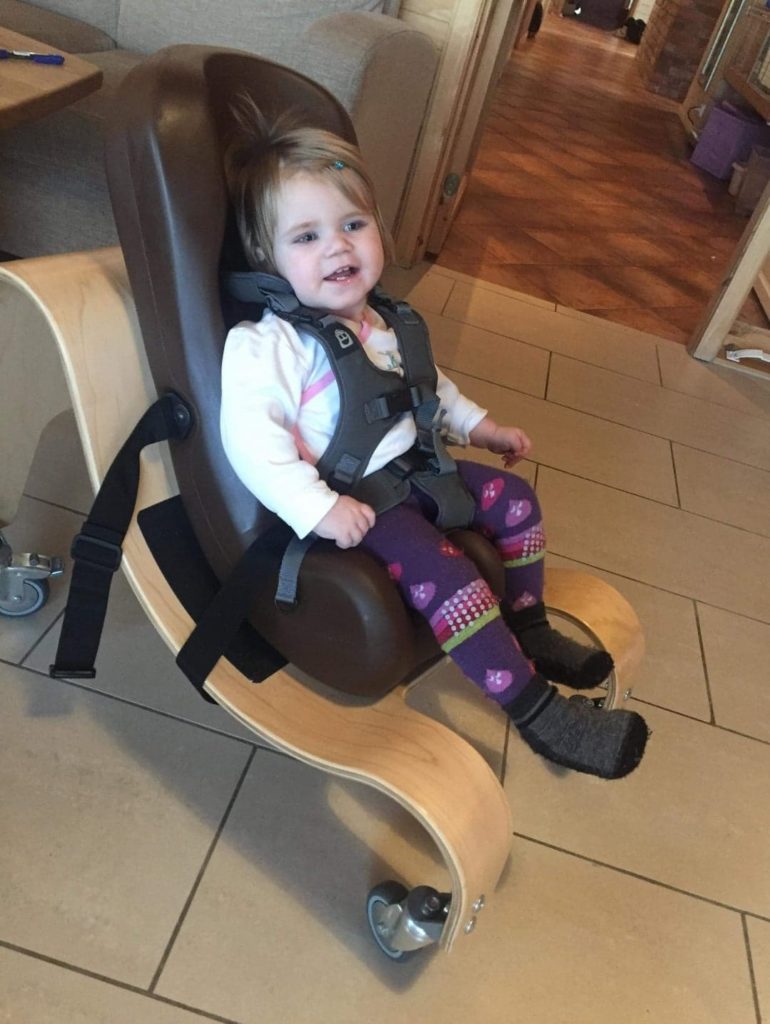

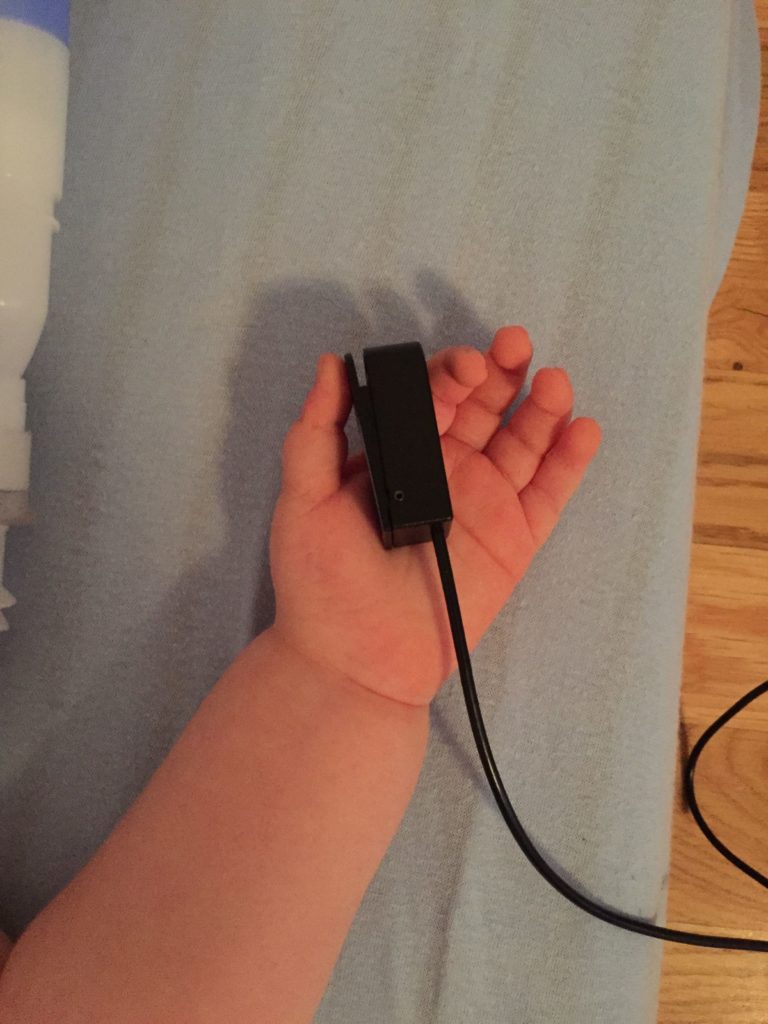



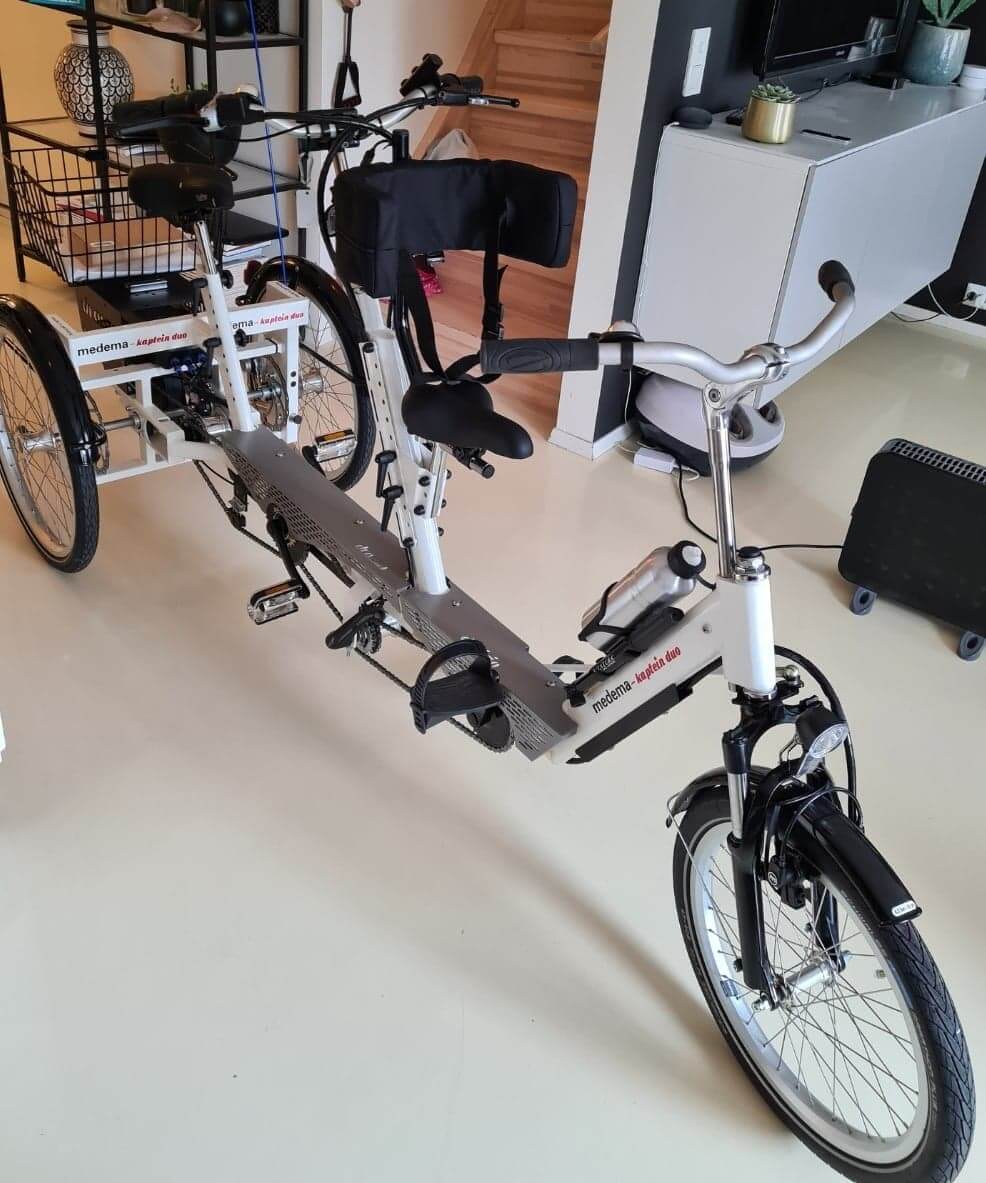
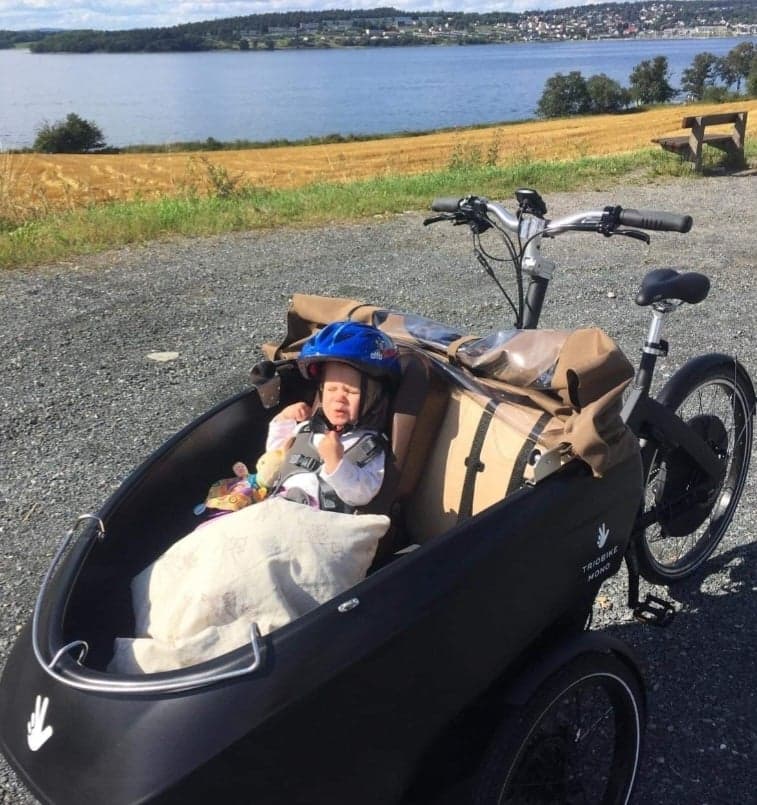
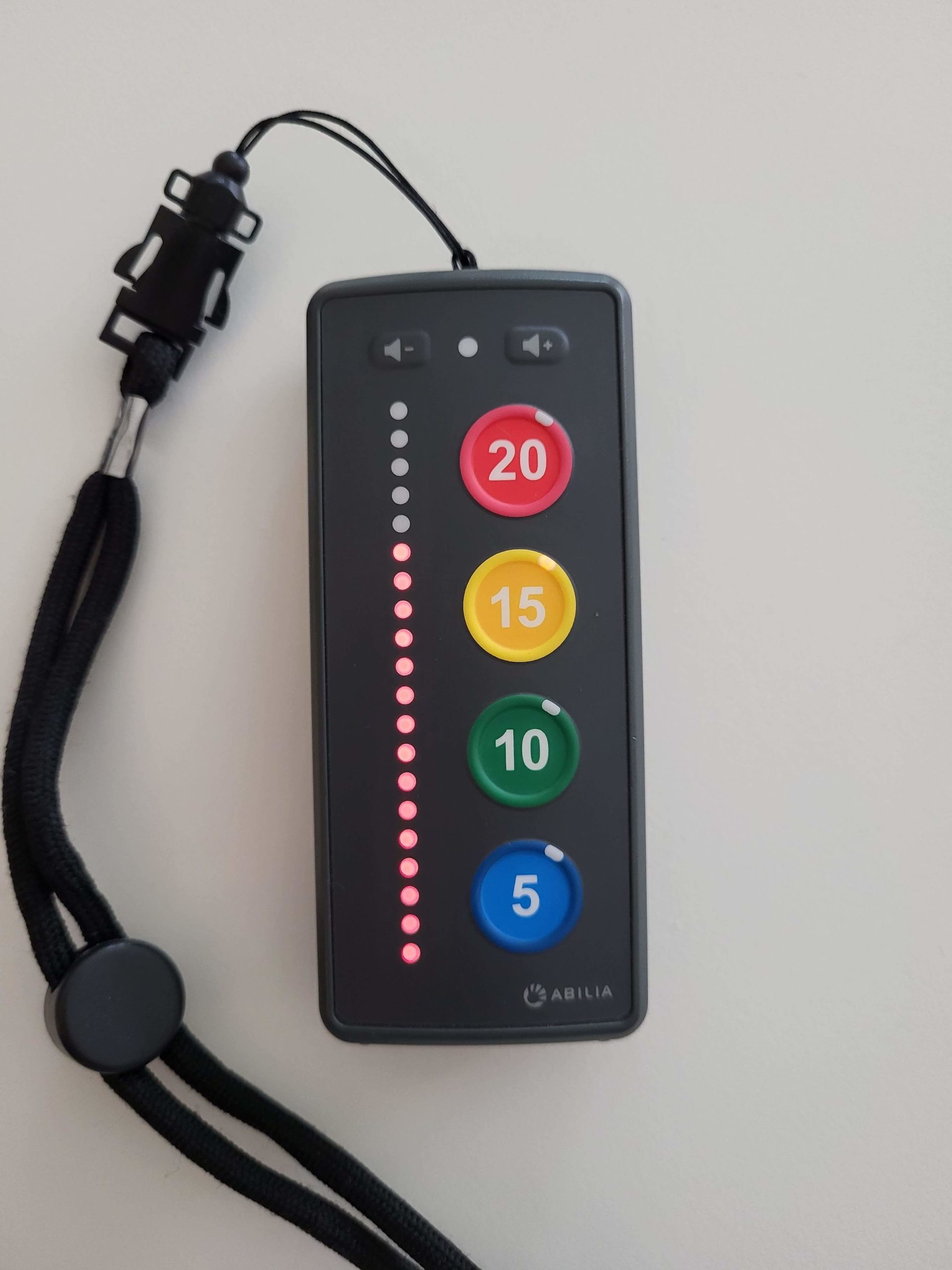
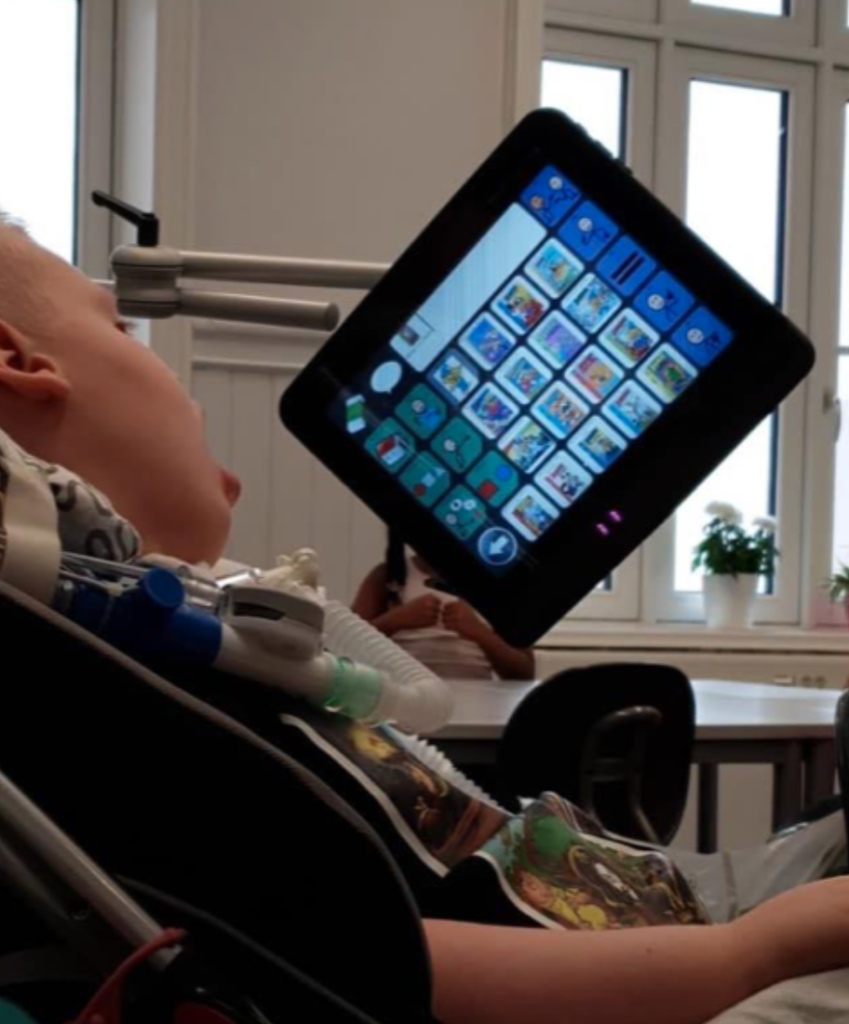
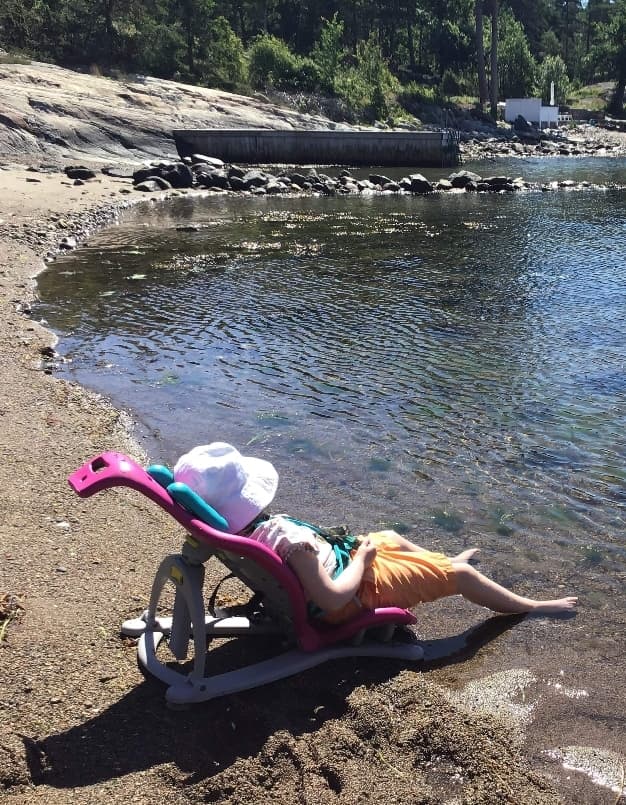


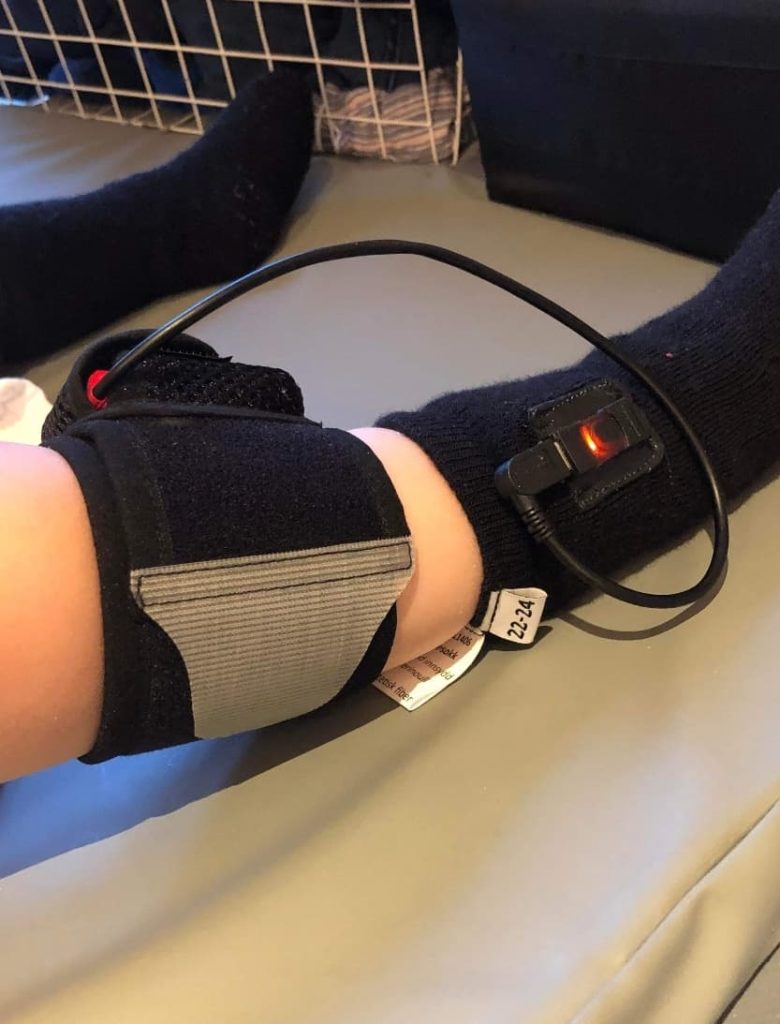
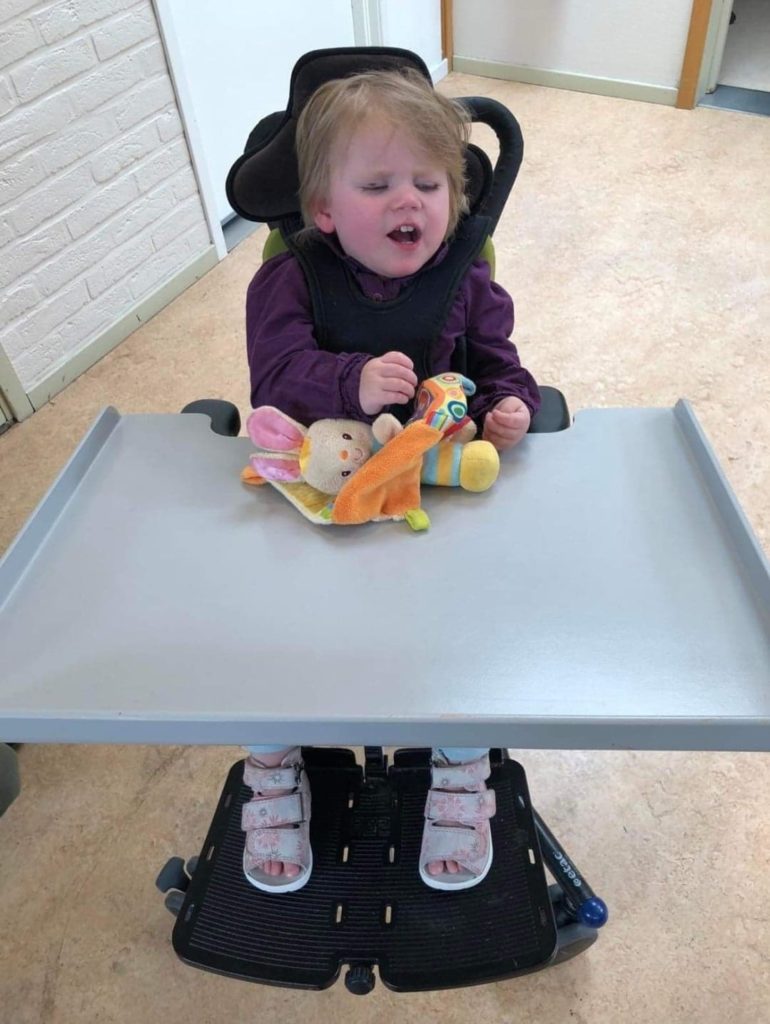
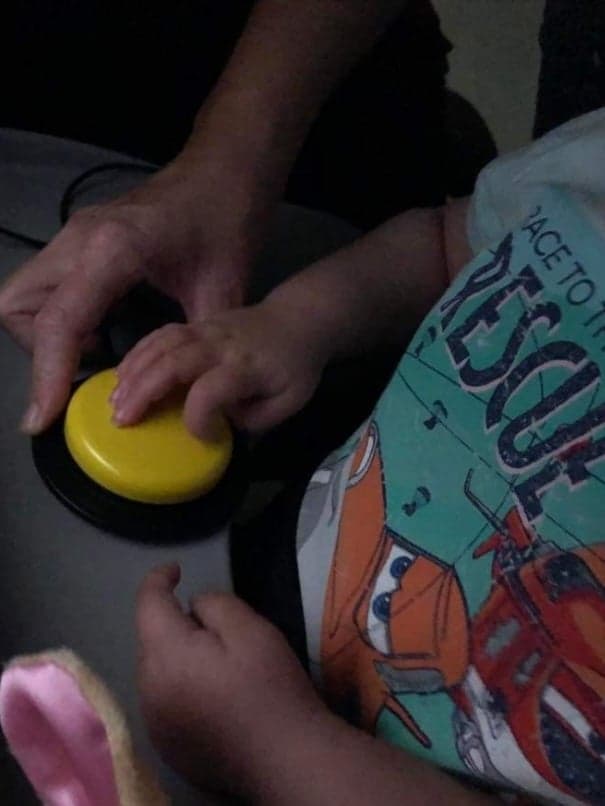
This article was last updated on 05.07.2022
- SUBJECTS: Rights
- Published:
- The lion mothers
- SUBJECTS: Rights
- Published:
- The lion mothers